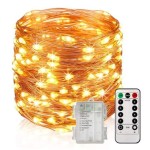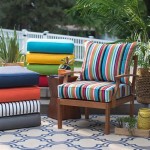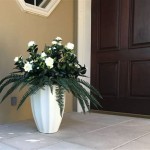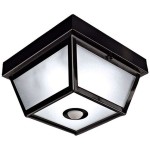Small Outdoor Dining Sets For 4: Maximizing Comfort and Style in Limited Spaces
Outdoor dining sets designed for four individuals represent a popular choice for homeowners and renters with smaller patios, balconies, or decks. These sets offer a practical solution for enjoying meals al fresco without overwhelming the available space. The market offers a diverse range of styles, materials, and configurations, allowing consumers to select options that complement their aesthetic preferences and meet their specific needs. This article will explore the key considerations when selecting a small outdoor dining set for four, focusing on factors such as material selection, style considerations, space optimization, and maintenance requirements.
Material Selection: Balancing Durability and Aesthetics
The material composition of an outdoor dining set significantly influences its longevity, maintenance requirements, and overall aesthetic appeal. Common materials used in the construction of small outdoor dining sets include wood, metal (aluminum, steel, and wrought iron), resin wicker, and composite materials. Each material possesses unique characteristics that make it suitable for different environments and usage patterns.
Wood, particularly teak, cedar, and acacia, is a classic choice for outdoor furniture. Teak is highly prized for its natural resistance to moisture, insects, and decay, making it an excellent option for coastal environments or areas with high humidity. Cedar offers similar resistance to the elements and emits a pleasant aroma. Acacia is a more affordable hardwood option that provides reasonable durability. However, wooden furniture typically requires regular maintenance, such as cleaning and oiling, to preserve its appearance and prevent cracking or warping. The natural aesthetic of wood lends itself well to a variety of styles, from traditional to contemporary.
Metal frames, especially those made of aluminum, are popular due to their lightweight nature, resistance to rust, and relatively low maintenance requirements. Aluminum is often powder-coated to provide additional protection against the elements and to offer a wider range of color options. Steel and wrought iron are stronger than aluminum, providing greater stability and a more substantial feel. However, steel and wrought iron are susceptible to rust and require more diligent maintenance, including regular painting or sealing. Metal frames are often paired with various tabletop materials, such as glass, stone, or wood, to create a diverse range of aesthetic styles.
Resin wicker, also known as all-weather wicker, is a synthetic material designed to mimic the look of natural wicker while offering superior durability and weather resistance. Resin wicker is typically made from polyethylene or polyvinyl chloride (PVC) and is resistant to fading, cracking, and moisture damage. It requires minimal maintenance, typically only requiring occasional cleaning with soap and water. Resin wicker is often woven around aluminum frames to provide structural support. The material's flexibility allows for intricate designs and a variety of aesthetic styles, from traditional to modern.
Composite materials, such as recycled plastic lumber or wood-plastic composites (WPC), are increasingly popular choices for outdoor furniture. These materials are made from a combination of recycled plastic and wood fibers, offering a durable, weather-resistant, and environmentally friendly alternative to traditional wood. Composite materials are resistant to rot, insects, and moisture damage, and require minimal maintenance. They are available in a variety of colors and textures, allowing for a range of aesthetic styles. However, the cost of composite materials can be higher than some other options.
Style Considerations: Matching the Set to the Outdoor Space
The style of an outdoor dining set should complement the overall design of the outdoor space and reflect the personal preferences of the homeowner. Common styles for small outdoor dining sets include traditional, modern, contemporary, and rustic. Each style is characterized by specific design elements, such as shape, color, and materials.
Traditional outdoor dining sets often feature ornate details, such as curved legs, decorative carvings, and intricate weaving patterns. These sets typically incorporate materials such as wood, wrought iron, or resin wicker with a classic aesthetic. Traditional sets often evoke a sense of elegance and formality, making them suitable for more formal outdoor spaces.
Modern outdoor dining sets are characterized by clean lines, minimalist designs, and a focus on functionality. These sets often incorporate materials such as aluminum, stainless steel, or glass, with a sleek and contemporary aesthetic. Modern sets are often designed to maximize space efficiency and create a clean and uncluttered look.
Contemporary outdoor dining sets blend elements of both traditional and modern styles, creating a balanced and versatile aesthetic. These sets may incorporate a mix of materials, such as wood and metal, or feature unique shapes and designs. Contemporary sets are often designed to be comfortable and inviting, while still maintaining a sense of style and sophistication.
Rustic outdoor dining sets are characterized by natural materials, such as wood and stone, and a focus on creating a warm and inviting atmosphere. These sets often feature rough-hewn textures, natural wood finishes, and earthy colors. Rustic sets are often designed to blend seamlessly with the natural environment, making them suitable for gardens or outdoor spaces with a natural aesthetic.
Beyond these broad categories, specific design elements can further refine the style of an outdoor dining set. The shape of the table, for example, can significantly impact the overall look and feel. Round tables are often considered more intimate and conducive to conversation, while rectangular tables are better suited for larger gatherings or for maximizing seating capacity. The type of chairs included in the set can also influence the style. Armchairs offer greater comfort and support, while armless chairs are more space-efficient.
Space Optimization and Practical Considerations
Selecting a small outdoor dining set necessitates careful consideration of the available space and the intended use of the set. Measuring the dimensions of the outdoor space is crucial to ensure that the set will fit comfortably without overcrowding the area. It is also important to consider the traffic flow around the set and to ensure that there is ample space for people to move freely.
Folding or stackable chairs can be a valuable asset for small outdoor spaces, allowing for easy storage when the set is not in use. Drop-leaf tables or extendable tables offer flexibility, allowing the table to be adjusted to accommodate different numbers of guests. Benches can also be a space-saving alternative to individual chairs, providing seating for multiple people in a compact footprint.
The climate and environmental conditions of the outdoor space should also be taken into account when selecting a dining set. For example, in areas with frequent rainfall, it is important to choose materials that are water-resistant and quick-drying. In areas with strong sunlight, it is important to choose materials that are fade-resistant and provide UV protection. The presence of pests, such as insects or rodents, should also be considered when selecting materials. Some materials, such as cedar and certain composite materials, are naturally resistant to pests.
The comfort of the dining set is also an important consideration. Chairs with supportive backrests and ample cushioning can significantly enhance the dining experience. The height of the table and chairs should be appropriately matched to ensure comfortable seating. Outdoor cushions and pillows can add both comfort and style to the dining set. These accessories are available in a variety of colors, patterns, and materials, allowing for customization to match the overall aesthetic of the outdoor space.
Finally, the ease of maintenance and cleaning should be considered when selecting a small outdoor dining set. Materials that require minimal maintenance, such as aluminum, resin wicker, and composite materials, are often preferred for their convenience. However, even these materials require occasional cleaning to remove dirt, grime, and mildew. Wood furniture typically requires more frequent maintenance, such as cleaning, oiling, or staining, to preserve its appearance and prevent damage. It is important to choose materials that are durable and easy to clean, and to follow the manufacturer's instructions for proper care and maintenance.
By carefully considering these factors, consumers can select a small outdoor dining set for four that perfectly complements their outdoor space, meets their specific needs, and provides years of enjoyment.

Pamapic 6 Piece Aluminum Outdoor Patio Dining Set With Rectangle Table Small Side And 4 Stackable Chairs Tb Cz H Wh3

Huntington Outdoor Dining Furniture Pottery Barn

Flash Furniture 5 Piece Outdoor Patio Dining Set 31 Square Tempered Glass Table 4 Brown Flex Comfort Stack Chairs

Mf Studio 5 Piece Patio Dining Set 4 Wicker Armchairs Square Table Umbrella Support Walmart Com

Mf Studio 6 Piece Patio Dining Set 4 Swivel Chairs Square Table 9ft Umbrella Black Beige Blue Walmart Com

8 Piece Aluminum Black Outdoor Patio Dining Set With Rectangle Table Small Side And 6 Stackable Chairs

The Best Small Space Dining Set For 4 2025 Homary

Kendall 4 Person 42 Square Outdoor Dining Set By Telescope Casual Best Fire

42 Knf Mosaic High Dining Set W 4 Stools

Tropitone Keo Sling Outdoor Dining Set For 4








